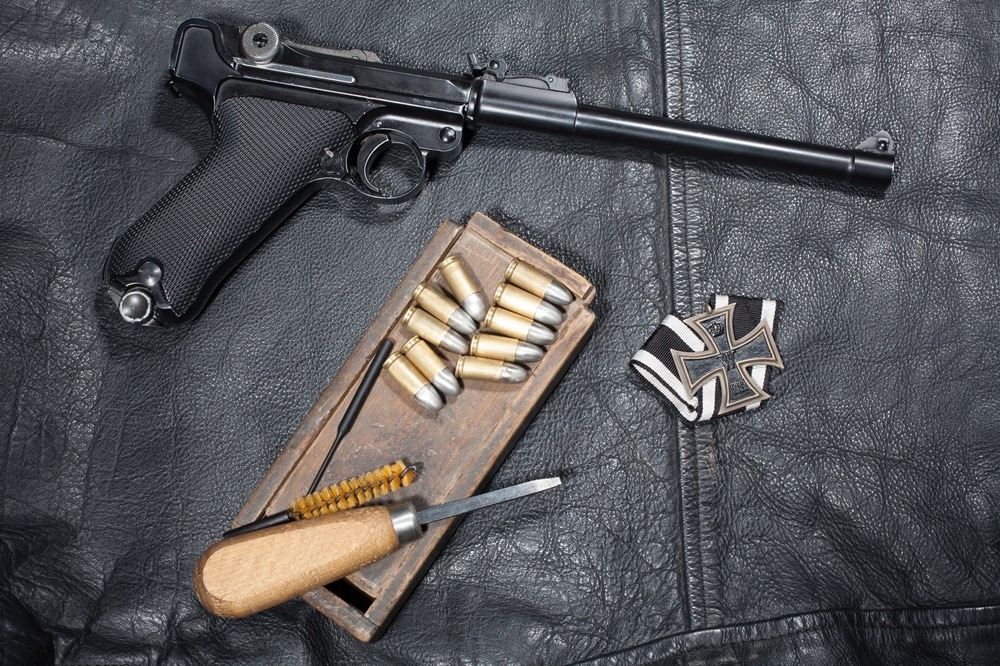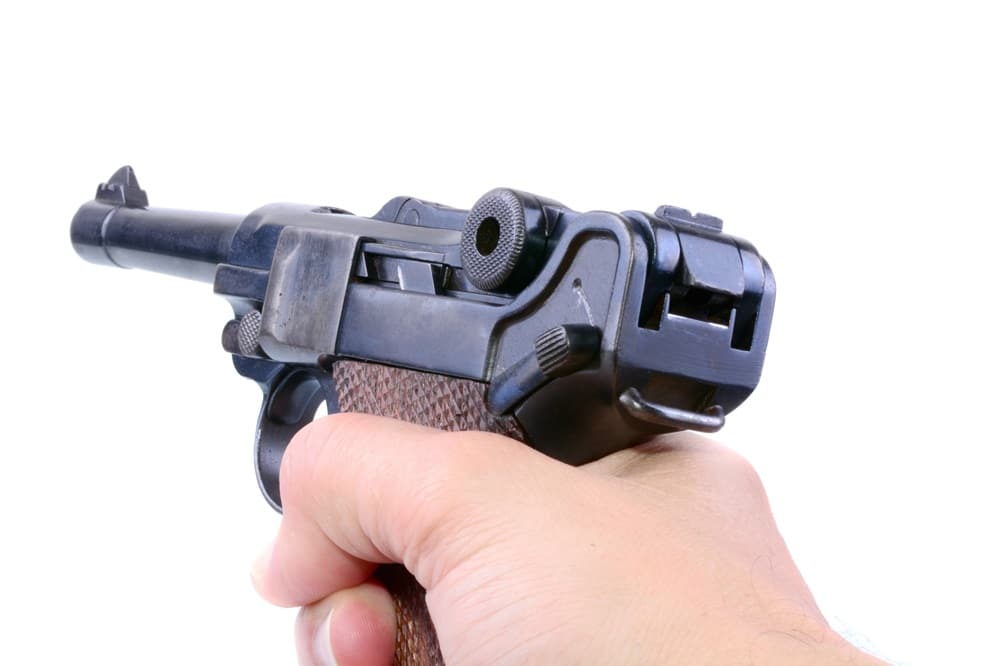One of the Most Recognizable Handguns in the World
Greg | 17 January 2024
The German Luger handgun, officially known as the Pistole Parabellum, is a firearm that has left an indelible mark on the history of handguns. Designed by Georg Luger in the late 19th century, this iconic semi-automatic pistol has both virtues that have earned it a devoted following and shortcomings that have sparked controversy. In this brief article, we will delve into the history of the German Luger, extolling its virtues, while also addressing its limitations and the controversies surrounding it.
The Birth of the Luger
To truly understand the German Luger, we must first travel back in time to the late 19th century. Georg Luger, an Austrian engineer, played a pivotal role in the development of this remarkable handgun. He refined the design initially created by Hugo Borchardt and ultimately produced the iconic Parabellum Pistol, known simply as the Luger.

One of the standout virtues of the Luger is its innovative toggle-lock mechanism. This mechanism, characterized by its distinctive jointed arm, is a marvel of engineering. When fired, the toggle mechanism moves in a unique pattern, locking and unlocking the breechblock with each shot. This innovative design not only contributed to the Luger's accuracy but also made it aesthetically distinctive.

Virtues of the German Luger
One of the most significant virtues of the German Luger is its exceptional ergonomics. The pistol feels comfortable and natural in the hand, with a grip angle that many shooters find ideal. Its slim profile, combined with well-placed controls, allows for quick and intuitive operation. The toggle-lock action, while unique, contributes to the pistol's low recoil, making it highly controllable and accurate.
Collectors and shooters around the world still value the Luger, and it remains a sought-after firearm in the market. Many variations and reproductions exist, catering to both those who appreciate its historical significance and those who admire its unique design.

Iconic Aesthetics - The Luger's aesthetics are iconic, and it remains one of the most recognizable handguns in the world. Its distinctive shape, toggle-lock mechanism, and sleek lines have made it a symbol of German engineering and craftsmanship. The pistol's visual appeal has garnered a dedicated fan base, with many collectors and enthusiasts cherishing it for its unique design.
Historical Significance
The German Luger is steeped in historical significance. It played a crucial role in both World Wars and was the standard-issue sidearm for the German military during World War I and World War II. Its association with the German army has added to its mystique and historical importance. Despite its toggle-lock mechanism being considered complex, the Luger is known for its reliability and accuracy. The tight tolerances and excellent craftsmanship contribute to its consistent performance on the firing range. Many marksmen and competitive shooters have praised the Luger for its exceptional accuracy, which has helped it maintain its reputation over the years.
The Shortcomings of the Luger
While the German Luger has many virtues, it is not without its shortcomings and controversies. It's essential to acknowledge these aspects to provide a balanced perspective. The toggle-lock mechanism, while innovative, is also intricate. This complexity can make the Luger more challenging to disassemble and maintain compared to other handguns. For those not familiar with its inner workings, routine maintenance can be a daunting task. One of the notable shortcomings of the Luger is its limited magazine capacity. Most Luger variants have a magazine capacity of 8 rounds, which is lower than many contemporary handguns. In a self-defense or combat situation, having fewer rounds at your disposal can be a significant drawback.
The Luger's design, while groundbreaking in its time, is now considered outdated by modern standards. It lacks features that have become commonplace on contemporary handguns, such as accessory rails for lights and lasers, ambidextrous controls, and adjustable sights. Its ergonomics, while praised for their time, may not meet the preferences of all shooters today. The Luger has also been associated with controversies, primarily due to its use by Nazi Germany during World War II. It is essential to acknowledge that this firearm was used by a regime responsible for heinous crimes. The historical context of the Luger's use can raise moral and ethical questions for some collectors and enthusiasts.
